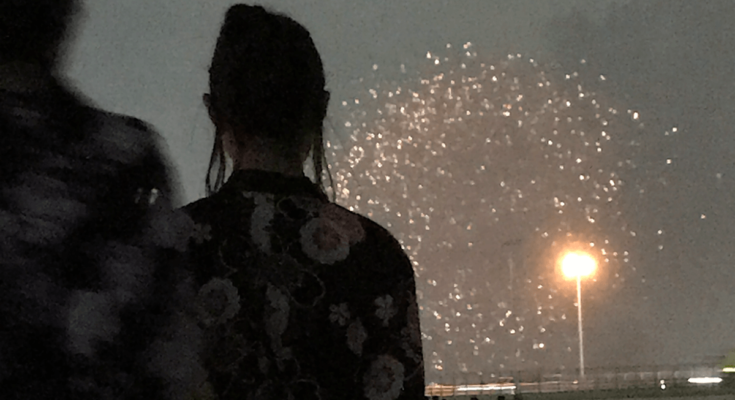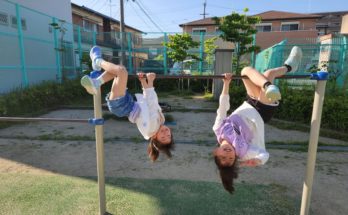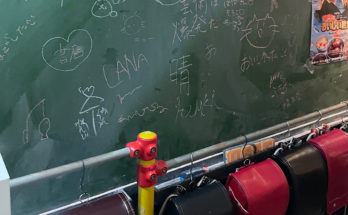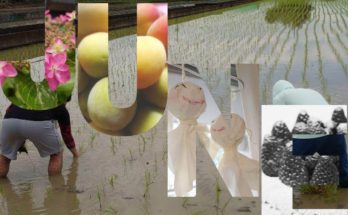After a long, tough period, it’s time to go somewhere this summer. You might want to go sightseeing, outdoor activities, music festivals, and so on, but why don’t you go see fireworks this summer? You wouldn’t miss the fireworks festival if you were in Japan. “Fireworks” translates into hanabi (花火) in Japanese. Also, 花 (hana) means a flower, and 火 (hi) means a fire in kanji, so “hanabi” literally means that appreciating flowers and fireworks are in the same sense for Japanese people (hana + hi → bi = hanabi, or “fire-flowers”). Of course, I know there are fireworks all over the world. You might see them on New Year’s Eve in your country. For most Japanese, the first thing that comes to our mind when it comes to hanabi is “summertime.” I’m going to talk about summer Hanabi in Japan.
When Did Hanabi Start?
According to Wikipedia, it was recorded for the first time in a diary for a Japanese peerage in 1447. At first, gunpowder, an ingredient of hanabi, was believed to be used as a sign of starting a war. After that, it turned around in mid-17th century (the Edo Era), at which point it was no longer used as a sign for starting a war, due to the peaceful period after this era. Instead, fireworks became a popular form of entertainment for common people in Japan.
What is Tamaya and Kagiya?
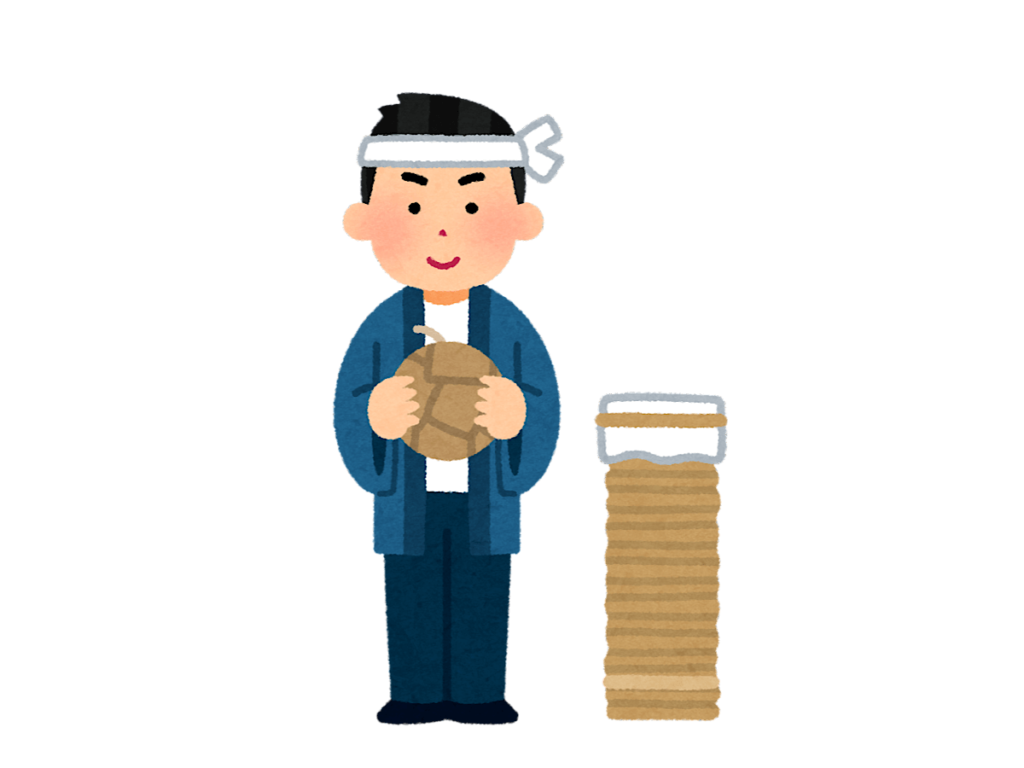
You might hear someone call “tamaya” or “kagiya” while you are watching hanabi.
These are the names of hanabi makers in the Edo era. People admired both makers and called their names as they created fine hanabi at that time. Even today, it has become popular among many Japanese. Kagiya only passed down their business for generations.
Why Does It Play in Summer?
To be honest with you, I’m not sure, but I can say with confidence that there are a lot of hanabi festivals all over Japan, starting in July. The worst thing in summer, unfortunately, is the humidity in Japan. Why do people take part in hanabi festivals during such a humid season? Strangely enough, you might feel comfortable while you are looking at hanabi. When you look at it, you might feel a breeze through your ears. When I was a kid, a TV advertisement was aired by a famous pharmaceutical company that sold mosquito coils. The film depicted amazing fireworks on a summer night. It reminds me that fireworks festivals take place in summer. So I think appreciating hanabi is one of the most popular activities in our culture.
What Does Hanabi Mean for Japanese People?
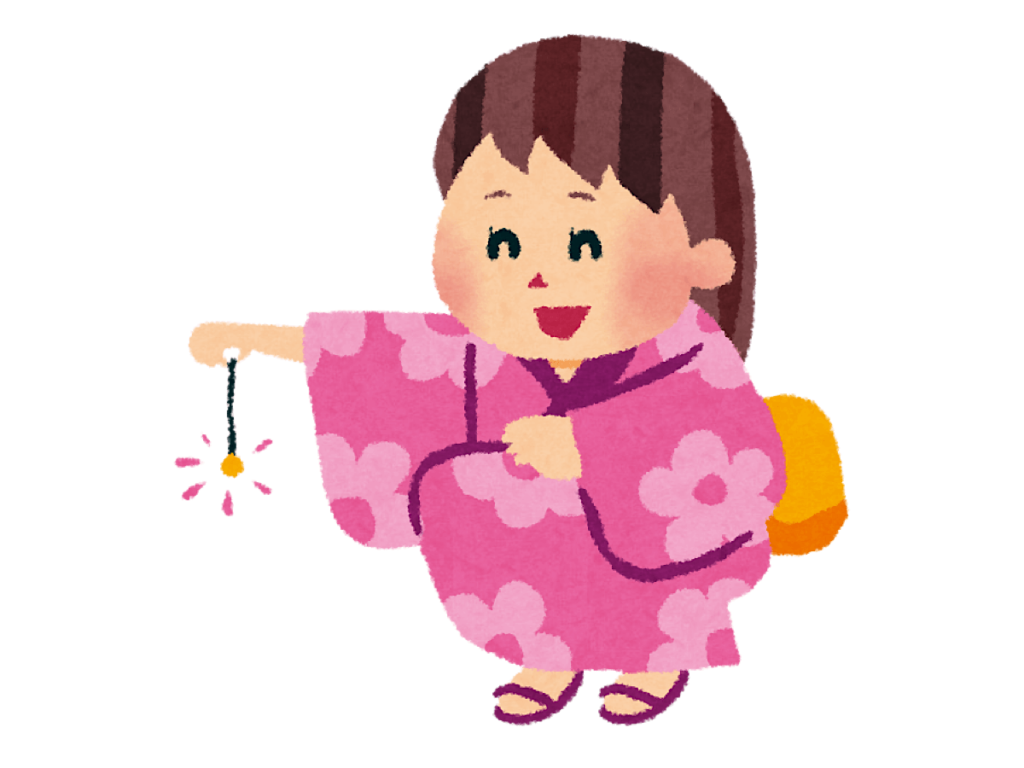
Aside from the hanabi festivals, you can see people play with hanabi while with their friends and family in the summertime. You can buy them at convenience stores (called “Convinis” in Japan), or grocery stores. There are varieties of hanabi packages, and you can enjoy putting them on the ground and grabbing them. Today, I’m going to talk about my favorite Hanabi, which is hands down Japanese sparklers. In Japanese, sparklers are called 線香花火 (senko hanabi). This firework is really fragile and can easily fall on the ground if you treat it roughly. However, if you treat it gently, the sparkler will last for a long time. When I was a child,I used to compete with my friends to see who could make their sparkler last the longest. One of my favorite reasons is, compared to other fireworks, he sparkle will last longer, and finally, it becomes a small tiny fireball and disappears in the dark night. It’s not that exciting, but it is something that I love.
Let’s Go to Enjoy Fireworks Festivals
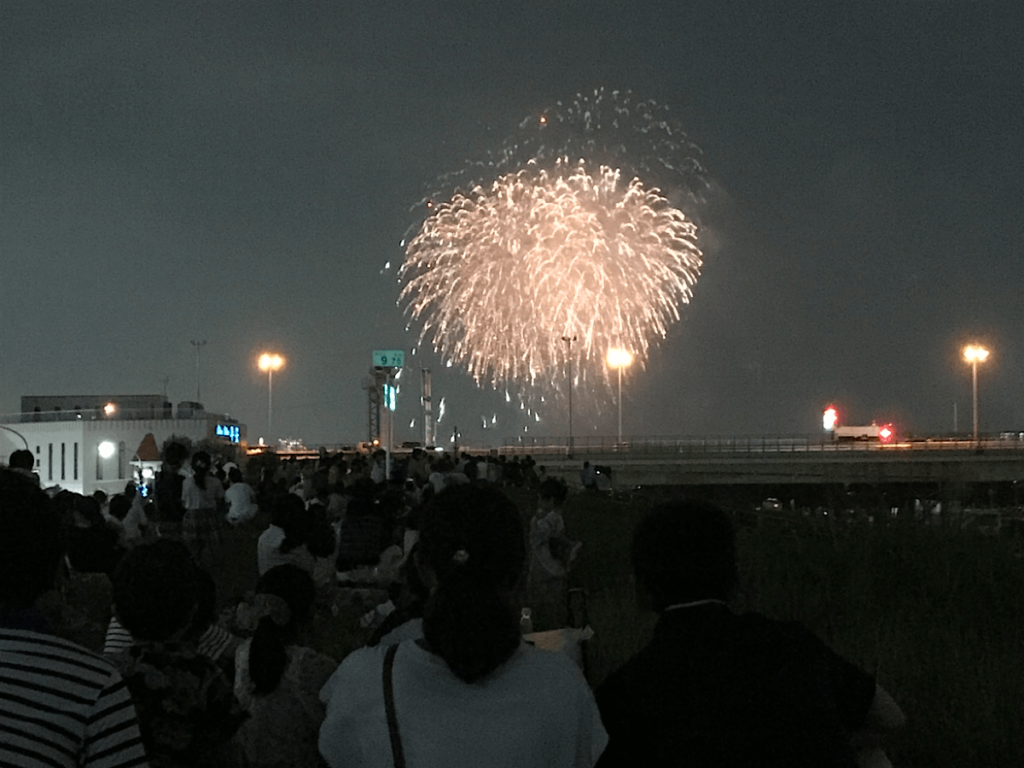
Access
When you go to the festival by public transportation, you should buy round tickets or use electric cards. To avoid crowds, you can stay there for around half an hour while you are immersed in the afterglow.
Things You Should Bring

Folding chairs, picnic blankets, folding umbrellas, towels, portable fans, sunscreen, and so on. Among these, I’d like to recommend bringing folding chairs and portable fans. As the ground in Japan is probably clean, and you can sit there directly. However, there are a lot of crowds, so you can’t stay there for long. It’s convenient to have the chair to enjoy seeing hanabi comfortably. As for a portable fan, it helps keep you cool in the crowds while waiting. Many stalls might offer a variety of foods like yakisoba, takoyaki, karaage, and so on. There are a lot of stalls. You might notice Convini or restaurants also sell special meals in their neighborhoods.

That’s it all for today. How was that? Craftsmen are bending over backward to make us happy for the entire year. Once hanabi festivals start, you might be overwhelmed by the vibe that is through the air. Just let yourself go with the flow. Whenever I look at a big hanabi in the clear night sky, I feel it’s really transient. Finally, the festival culminates with a spectacular fireworks show. It reminds me that life is short and beautiful. I hope you have a wonderful hanabi experience this summer. Thank you for taking the time to read my article to the end. See you next time soon!
I worked at a trading company for many years. I live in Tokyo with my wife. Love skiing, traveling, IPAs, wine , X-treme sports, fashion, and learning English and Chinese.

